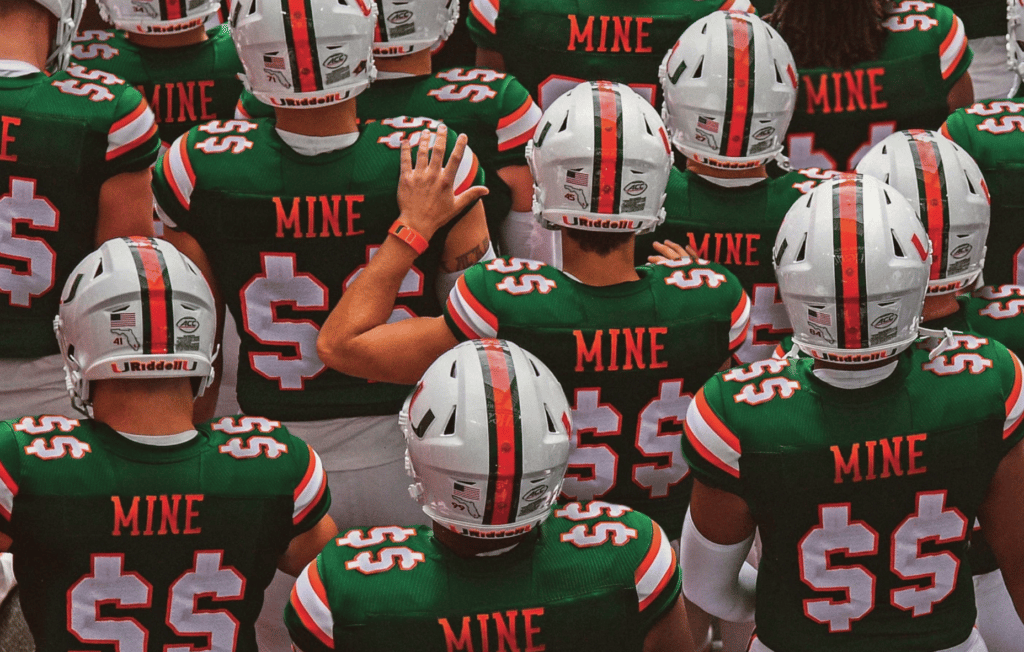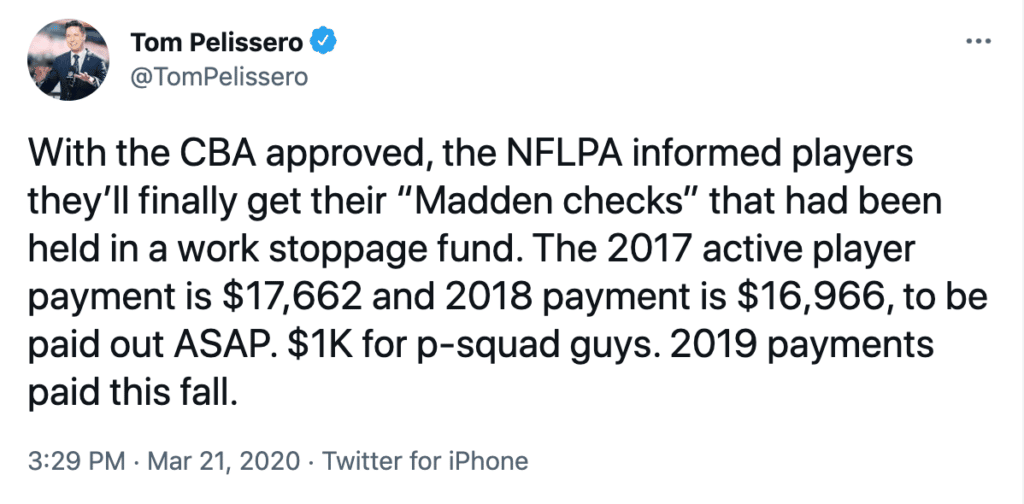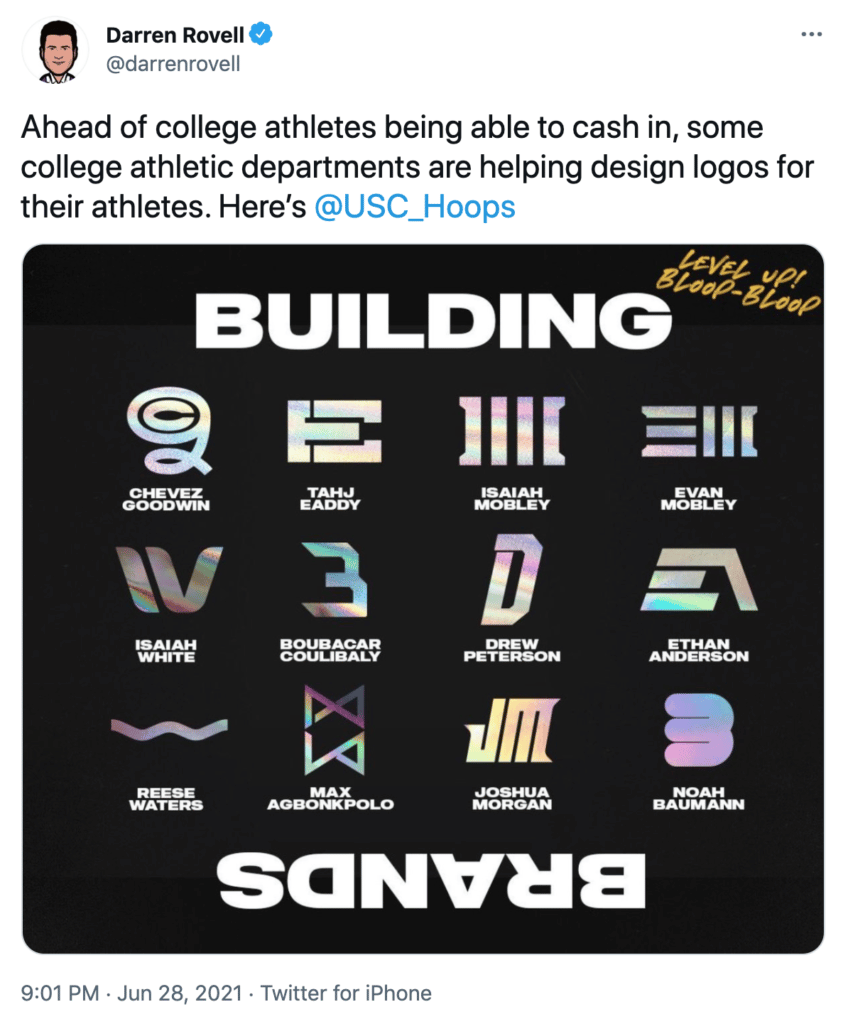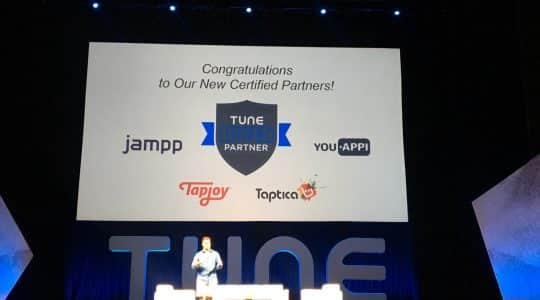
Today, the NCAA puts in play a policy that allows college athletes to get paid for their name, image, and likeness (NIL). This is a giant step forward for an institution that has been widely criticized in popular culture, from Barack Obama to “South Park,” for not allowing for their athletes to be paid, even as those athletes generated millions of dollars in revenue for their schools (or had difficulty affording campus meals).
This is also a giant step forward for affiliates around the world and the partnership ecosystem at large. In this blog post, I explain what’s going on and why it’s a big deal for the affiliate marketing industry.
What Is NIL?
NIL refers to a student-athlete’s name, image, and likeness — in other words, their brand.
Traditionally, athletes in the National Collegiate Athletic Association (NCAA) have not been allowed to endorse any commercial product or service, even if they were not getting paid to do so.
One of the most glaring examples of NCAA athletes not being compensated for the use of their NIL is the NCAA Football video game franchise developed by EA Sports. The similar EA Sports NFL franchise, Madden, pays NFL players more than $16,000 per player to use their NIL in each game, due to NFL players having a union to represent them (NFL Players Association).

What’s Happening Today with NIL and the NCAA?
Starting today, college athletes can take advantage of two major changes in the NCAA’s NIL policies and finally start getting paid.
- Players are allowed to be compensated for third-party endorsements related to athletics, without school or conference involvement.
- Players are allowed to be compensated for other student-athlete opportunities, such as social media, new businesses, and personal appearances, without institutional involvement or the use of trademarks/logos.
This obviously opens the door to massive amounts of marketing opportunities for both brands and athletes.
But how easy can it be to work with 18- to 22-year-old college athletes? Can they even provide value? Is there a way to scale quickly? We analyze some of these questions below.
Do College Athletes Have Scalable Reach?
Most college athletes will be what the influencer marketing industry calls “micro-influencers,” usually ranging between 1,000 to 5,000 social media followers.
Typical micro-influencers, though, have some sort of niche or focus for their content like fashion, technology, fitness, etc. It’s safe to say that, up until now, most college athletes were likely using their social channels to be regular college kids — posting pics of vacations, arguing with friends about whether Lebron James is better than Michael Jordan, or posting choreographed dances on TikTok. So it’s still to be determined if the everyday college athlete will be a valuable influencer.
Where it gets interesting is with the most well-known college athletes, where you might be surprised at how much reach they actually have. Darren Rovell of Action Network recently listed his “Top 20 Athletes who are favorites to Capitalize on Name, Image & Likeness” and the list gives you an idea of how much scale is becoming available to advertisers (top 5 listed below):
1. Spencer Rattler, Oklahoma Football
Instagram: 377K followers, Twitter: 62.7K followers
2. Olivia Dunne, LSU Gymnastics
TikTok: 3.9M followers, Instagram: 1.1 million followers, Twitter: 7,372 followers
3. Shareef O’Neal, LSU Basketball
Instagram: 2.7 million followers, Twitter: 322,000 followers
4. Haley Cavinder & Hanna Cavinder, Fresno State Basketball
Haley — Instagram: 255K followers, Twitter: 4,577 followers
Hanna — Instagram: 251K followers, Twitter: 4,553 followers
5. Bryce Young, Alabama Football
Instagram: 82.3K followers, Twitter: 16K followers.
These are some serious numbers to pay attention to, especially for athletes who most likely have the young followers that brands are always after. What will be interesting is to see who steps up and how to help student athletes navigate these new waters of influencer marketing.
Is Anyone Doing Anything to Help Athletes Navigate NIL?
One of the most difficult parts of these opportunities to work with college athletes is going to be something a lot of marketers already have difficulty with when it comes to dealing with influencers. I’d bet many athletes aren’t going to be too inclined to use different technologies to grab links/coupon codes/creatives, and they’ve never worked in a professional marketing environment before. Being able to successfully work through these difficulties will be vital.
One company that is working specifically on NIL marketing is Opendorse. They already work with some very high-profile professional athletes, and they have launched new NIL solutions for college athletes. The company has direct partnerships with a number of Division 1 conferences and individual schools like Clemson, Texas, and Ohio State, and will no doubt make it easier to reach individual college athletes at scale.
Schools themselves are also putting resources together to help their athletes. We saw the USC basketball team recently create logos for every player on the team in hopes of allowing those athletes to capitalize on their personal brand. They’ve also hired a consulting firm to work on NIL strategy for all of their athletes spanning 21 different sports.

TUNE also has tools to help marketers and athletes take advantage of NIL opportunities. The TUNE platform allows you to create an affiliate account for an NIL influencer in seconds and have a working tracking link or promo code in their hands in minutes.
Our tagging functionality will allow you to pay close attention to your NIL influencers to make sure they are staying compliant with NCAA regulations, and they can stay actively promoting your products or services.
You’ll also be able to pay out NIL influencers for one-time brand deals as well as performance-based campaigns, providing flexibility in how you structure these new relationships.
Any Idea What Sort of Campaigns Will Work?
To start, it seems pretty clear that brand deals will be the first opportunities available for college athletes: a flat fee for a post or a shoutout in a story, etc.
Sports-related brands should also be some of the first to adopt college athlete influencers. We expect brands like Fanatics, Nike, and StockX to fully take advantage of this opportunity early on. GoPuff appears to be the first advertiser to offer all college athletes the opportunity to get paid for their NIL with a partnership with Opendorse. Examples of opportunities that could be interesting could be something like Shareef O’Neal and his dad (Shaq) hosting a watch party on Scener to watch the new “Space Jam” on HBOMax.
Looking Ahead
To sum it all up, there are tons of opportunities for marketers to get creative with how they dip their toes into the NIL waters, especially now that platforms are making it easier, from Instagram expanding link-sharing features to TikTok releasing business tools. We can’t wait to see what they come up with.
Questions or comments? We want to hear from you — start a chat with us here.
Author
During his time as VP, Business Development at TUNE, Nate spearheaded the Affiliate Rockstars series, which aims to highlight the hard-working individuals in the industry and share their expertise with a wider audience. Nate received his BA in Social Sciences from Washington State University.




Great content! Keep up the good work!